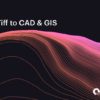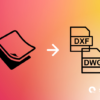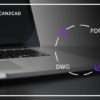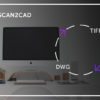As a popular file format, PDF packs a punch in terms of what it can handle. From the ability to display the accurate and exact layout and content regardless of the operating system or application on which it is viewed to…


As a popular file format, PDF packs a punch in terms of what it can handle. From the ability to display the accurate and exact layout and content regardless of the operating system or application on which it is viewed to…
Urban designers and various construction professionals will, at some point in their career, be tasked to draft up plans of city maps or locations with little to no source materials available to copy. In these cases, Google Maps would often be…
Video Tutorial: Converting PDF to DWG (AutoCAD 2023) Let’s jump straight into the video tutorial for converting your (raster or vector) PDF files to DWG using Scan2CAD – the leading computer-aided design (CAD) conversion software. AutoCAD 2023 We’ve talked about AutoCAD plenty of…

If you work with AutoCAD you have probably had a regular requirement to convert photos to CAD for you to use them in AutoCAD. The problem is that many conversion solutions will not give you the results you require. In this…

Since its launch in 1993, the PDF format has come to reign supreme in the field of document sharing. The high fidelity with which it displays a range of textual and graphical information makes it an obvious choice for collaborative working….

If you work with any kind of images, you’re likely to have come across BMP files. They are the native image format for Windows, meaning a lot of computers will store images as BMP by default. This is not necessarily a…

To be able to edit your designs in CAD software, you’ll need to ensure that they’re saved as vector files. If you originally created the design in CAD software, then this won’t cause any issues. If your design started life on…

Here at the Scan2CAD blog, we talk a lot about the theory behind raster-to-vector conversion. We also provide handy guides on everything from automatic tracing to raster file types. All of the theory would be worth nothing, however, if it wasn’t…

You’re likely familiar with the BMP format, which was developed by Microsoft to serve as the native image format for Windows. It’s also handy for storing 2D images, and many common image editors support the format. If you’re looking to use…

DXF and DWG are files with a shared history, but that certainly does not mean they are interchangeable. Sure, they have many similar qualities, but you should be aware that they are suited to slightly different uses. Particularly if you want…

GeoTIFF is a powerful file format, allowing users to attach georeferencing data to high-quality images. It’s possible to embed GeoTIFF files into GIS applications for illustrative purposes. However, to use them in CAD, or for broader purposes in GIS, you’ll need…
Most images online, or on your PC, will be in a raster image format. However, raster images aren’t suitable for all purposes. If you need to edit an image using CAD software, for example, you’ll need to convert your image to…

PDF is one of the world’s most useful and versatile file formats. Unlike many of its competitors, it doesn’t require any specific software; users can open it using any standard web browser. Add in its ability to contain a variety of…

Though the medium of design has now shifted from the sketchpad to the screen, there are still those who prefer to sketch by hand. Nonetheless, it’s rare to find anyone within the design industry who produces a hard copy of a…

Sometimes, people have unrealistic expectations of what automatic file conversion software can achieve. Yes, this clever software can create a vector image within 5 seconds. However, it’s important to remember this raster-to-vector conversion mantra: garbage in, garbage out. If the main…

Widely used across a wide range of industries, PDF is one of the most well-known file formats around. Practically every device on the market can support PDFs, making the format perfect for exchanging documents and design information. However, whilst PDF files are easy to…

One of the most commonly used image file formats, JPG files are ubiquitous in the worlds of online graphics and digital photography. However, they also suffer from a number of limitations—some of which are common to all raster file types, some of which are…

TIFF is the gold standard raster file format in the design, engineering and publishing industries. TIFF stands for Tagged Image File Format, and is the go-to format for high-quality graphics. Despite its popularity however, the TIFF format has many limitations: it can…

With its rich features and status as the native file format for AutoCAD, it’s easy to see why many designers want to convert to DWG. Whilst conversion is a complex process, that doesn’t mean that it has to be difficult. Scan2CAD makes…

The reasons to convert from raster to vector are obvious. Vector graphics are editable and scalable, and won’t lose quality. Once you’ve converted, however, there’s another choice to make: which vector file type should you choose? Though there are many vector graphics formats available, CAD…